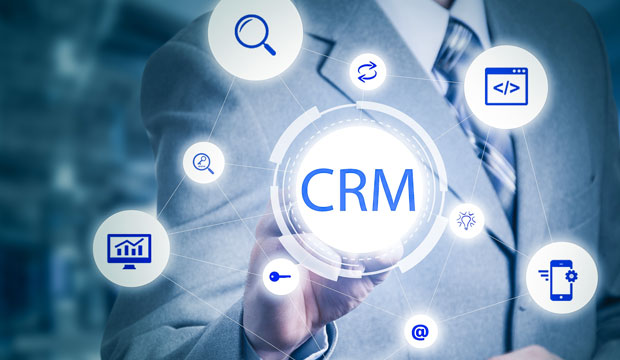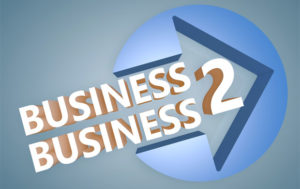Figuring out the year ahead in CRM is tricky and getting more so. Making predictions has been more challenging for the last several years. We’ve seen an array of new technologies take root and blossom, but managers have had trouble figuring out how to adopt them.
Those innovations have fueled a lot of anxiety in the C-suite about digital disruption, but the disruption is necessarily different for every company. Some will thrive on an IoT strategy, others on adding analytics to retail customer data. If we first make some educated guesses about where we are in the CRM lifecycle, however, things can get easier.
We live in an era of commoditization, consolidation, automation and capital efficiency. These drivers are the opposite of what you see early in a lifecycle when product categories are new, emerging companies are hiring a lot of people, and markets are generally expansionary. It’s an easy time to make money.
This era has been ongoing for some time. We may forget that cloud computing, going all the way back to the start of the century, is essentially a way to commoditize and automate IT. Those particular trends have only accelerated recently, with analytics and machine learning automating many functions or influencing the initiation of others.
For instance, marketing automation today is a far cry from even the wildest imaginings of marketers at the beginning of the century.
Also, Oracle’s introduction of its autonomous database and highly automated security (soon to be autonomous) further accelerate the general trends. So how do you make money and leverage front-office systems in this environment?
This era is about what happens once the emerging categories are in place and most of the low-hanging fruit has been picked. Opportunities today come from process automation and improvement, product line extensions (provided the extensions fill a well understood need), and novel approaches to customer engagement.
Notice that none of this has to do with technology per se; these measures are as old as human commerce, and for that reason they should be attended to. Technology will only make the job easier or faster.
Winning Engagement
Not to brag, but I’ve written books on this — but I’ll try not to bore you. The two choices customers have today are optimizing their time or optimizing value received in customer relationships.
If you sell via e-commerce, you’re a time optimizer and your efforts need to be focused there. That means, especially, using mobile technology, analytics and machine learning to keep online customers in the moment, and leveraging tools like community to keep them engaged when they aren’t buying something. A lot has to do with process.
If your business depends on developing and maintaining relationships face to face, at least occasionally, then you need to optimize the perceived value customers have when experiencing your business/store/restaurant/whatever. Simple points systems supporting customer loyalty programs often are used for this, but the research shows that when the points stop so does the loyalty.
Redeemable points place unnecessary drag on profitability, so it’s best to find additional ways to engage customers — even if that means providing rewards for things other than an actual purchase. Participating in a customer community, recommending a product or brand, and giving feedback are all ways to engage customers without the high overhead of points.
CRM for engagement includes customer journey mapping, sophisticated e-marketing, analytics, and powerful mobility solutions. So I think these types of CRM, though they’ve already had good runs, will continue to be valuable additions.
Understanding Process
This goes back to whole product, a 25-plus year-old idea that the product is more than what comes in the shrink-wrap. It includes the policies and procedures that customers interface with, and that help determine how well they are able to engage with vendors.
We’re in the process of automating many processes that were once dominated by employees, especially in service. Although a portion of most customer bases is made up of people who still use the phone first when needing help, their numbers are declining. Customers increasingly are using automated or semi-automated channels.
So we continue to see good uptake in automation — but beware, just because you and your company understand a process and the supporting technology, doesn’t mean customers do.
If your customer-facing systems turn into time sinks instead of value producers, you might get into trouble. The best way to understand how you’re doing is to ask. This can take many forms, from simple surveys inline with products, to analytics that help you see attrition on the horizon and take effective action.
I particularly like the way Salesforce is opening up its Trailhead training system to its partners to enable them to automate training. This will relieve confusion and frustration that can develop with any technology.
So, while all of the CRM suite available today remains valuable and in demand, we also need to keep watch on the human piece. Our ability to jump outside of the routines imposed by CRM and to engage customers remains our most valuable asset.
Entwining Engagement, Process and Product
In short, I see the CRM market pivoting from a technology provider to one that supplies increasingly sophisticated methodology. This has been budding for several years already. We talk about business models and technology models, but hardly ever do we consider our CRM model. The need is out there.
At the end of the day, all of the technology we’ve bought and implemented in the digital disruption will not be maximally effective if we don’t take the time now to develop our model of CRM — our method of CRM, if you prefer.
Virtually every business has a de facto CRM model that is suboptimal, mostly because it has evolved organically rather than consciously. It’s time to add a level of consciousness to the customer-facing part of most businesses.
Customers respond well to vendors that cover the bases well on routine, garden variety, vanilla interactions. In 2018, I’d put some additional effort into that.


























































Enjoyed reading the article above , It really explains everything in detail and the post is interesting to read.Thank you very much for the information you shared.
Great article Mr. Denis Pombriant. I really enjoyed reading this story you’ve written with so much information about CRM trends in 2018 and how it is gonna be valuable in the current year. I agree with your point that CRM enables enterprises to improve customer experience so, this is very correct. Thanks much for sharing such an informative story.
Best Regards
Roberto, Sr. Manager
Testree